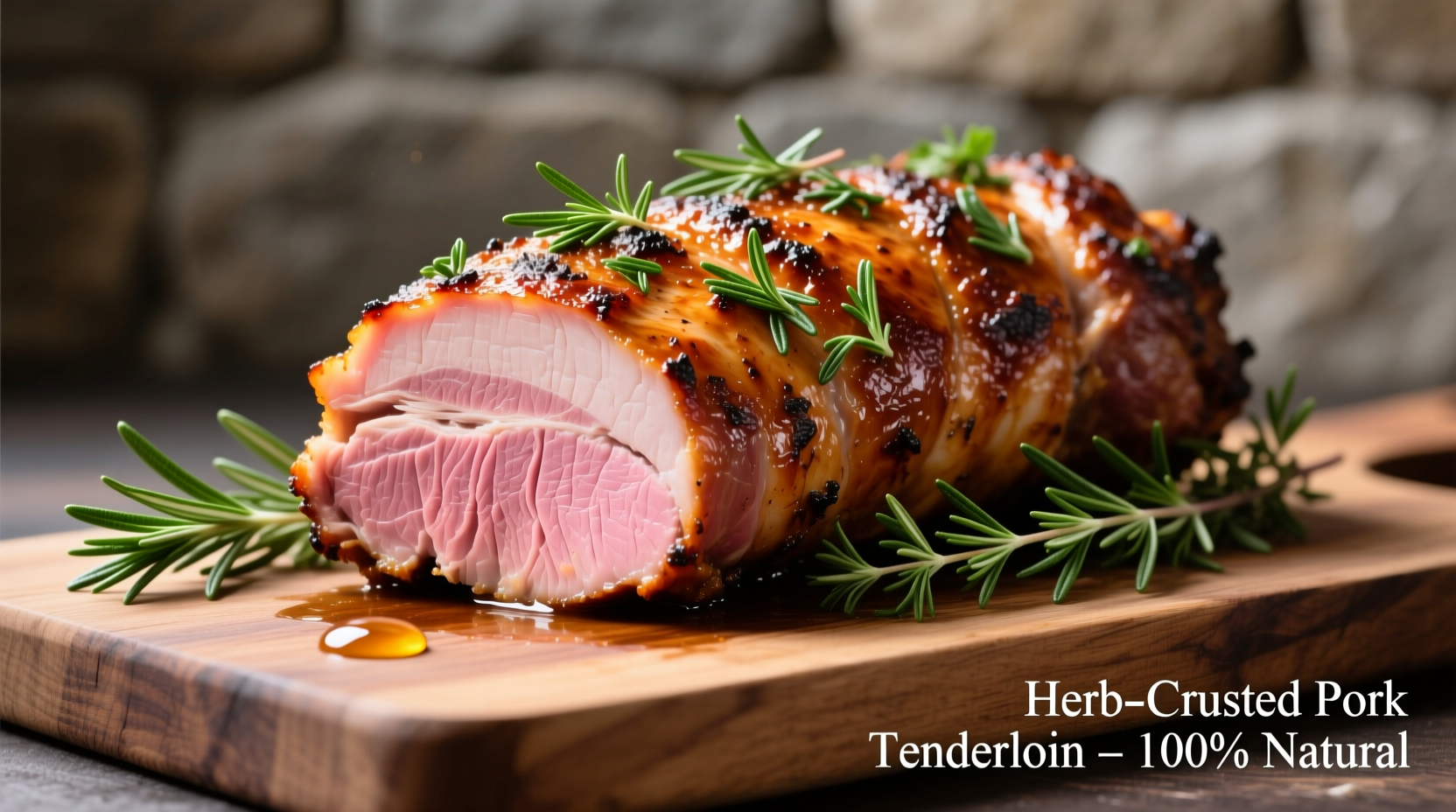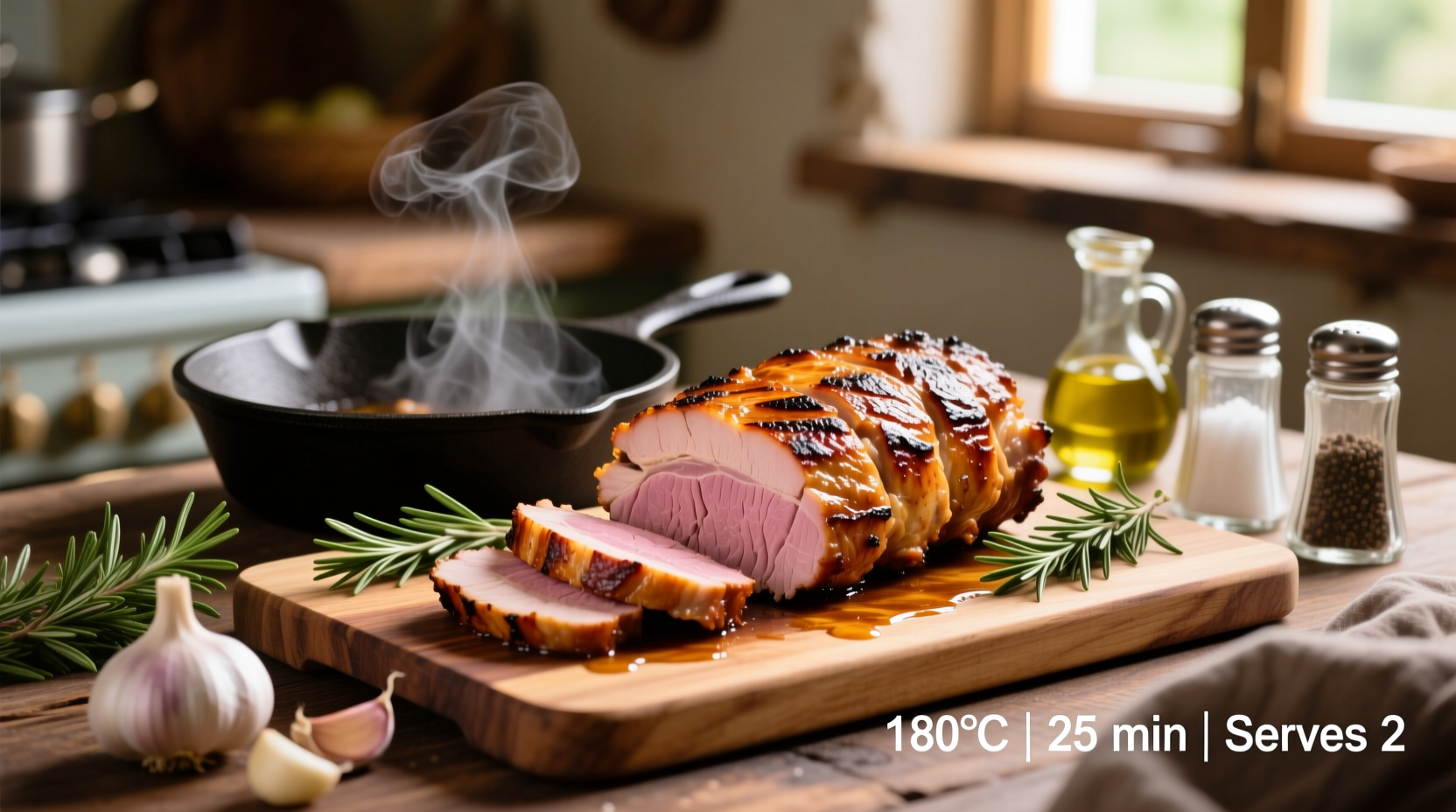Nothing elevates a weeknight dinner like a perfectly cooked pork tenderloin. This lean cut cooks quickly in the oven while maintaining exceptional tenderness when prepared correctly. Our tested method eliminates guesswork, ensuring restaurant-quality results without special equipment.
Why Oven Cooking Works Best for Pork Tenderloin
Pork tenderloin's delicate texture requires precise temperature control. The oven provides consistent, even heat that prevents the common pitfalls of stovetop cooking—overcooked edges and undercooked centers. Unlike slower methods, high-heat oven roasting creates a beautiful crust while keeping the interior moist.
According to culinary science research from the USDA Food Safety and Inspection Service, pork reaches safe eating temperature at 145°F (63°C) with a 3-minute rest period. This precise temperature guidance has transformed pork preparation, moving away from the previously recommended 160°F that often resulted in dry meat.
Essential Preparation Steps
Proper preparation makes the difference between ordinary and exceptional results. Follow these critical steps before heating your oven:
- Dry the surface thoroughly with paper towels—moisture is the enemy of proper browning
- Trim excess fat and silver skin using a sharp boning knife at a 30-degree angle
- Season generously at least 30 minutes before cooking to allow flavors to penetrate
- Tie with butcher's twine every 1.5 inches for even thickness and consistent cooking
| Flavor Profile | Dry Rub Combination (per 1.5lb tenderloin) | Best Paired With |
|---|---|---|
| Classic Herb | 2 tsp rosemary, 1.5 tsp thyme, 1 tsp garlic powder, 0.5 tsp black pepper | Roasted potatoes, green beans |
| Smoky Southwest | 1.5 tsp smoked paprika, 1 tsp cumin, 0.5 tsp chipotle powder, 0.5 tsp oregano | Cornbread, black bean salad |
| Sweet & Savory | 1.5 tbsp brown sugar, 1 tsp mustard powder, 0.5 tsp cinnamon, 0.5 tsp cayenne | Apple sauce, roasted carrots |
The Foolproof Oven Method
Follow this professional technique for consistently perfect results:
- Preheat oven to 400°F (204°C) with rack positioned in the center
- Prepare baking sheet with wire rack or line with foil for easy cleanup
- Sear the tenderloin in oven-safe skillet for 2-3 minutes per side until golden brown
- Transfer to oven and roast for 18-22 minutes (for 1.5lb cut)
- Monitor temperature using instant-read thermometer inserted into thickest part
- Remove at 140°F (60°C)—temperature will rise to 145°F during resting
- Rest for 5-8 minutes tented with foil before slicing

Critical Temperature Guidelines
Understanding the science behind pork cooking temperatures prevents common mistakes. The USDA Food Safety and Inspection Service updated guidelines in 2011, lowering the recommended safe temperature from 160°F to 145°F with a 3-minute rest period. This change acknowledges that pork becomes safe at lower temperatures while maintaining superior texture.
Temperature progression during cooking:
- 120°F (49°C): Raw, cool red center
- 130°F (54°C): Medium-rare, warm red center (acceptable for pork)
- 140°F (60°C): Medium, pink center (remove from oven at this stage)
- 145°F (63°C): USDA safe minimum after resting
- 150°F+ (66°C+): Begins to dry out significantly
Avoiding Common Mistakes
Even experienced cooks make these critical errors when preparing pork tenderloin:
- Skipping the sear: Proper browning creates flavor compounds through the Maillard reaction
- Overcooking: Just 5 extra minutes can turn juicy meat dry—use a thermometer
- Cutting too soon: Resting allows juices to redistribute throughout the meat
- Incorrect oven temperature: Too low causes steaming instead of roasting
Serving and Storage Tips
Slice against the grain at ½-inch intervals for maximum tenderness. Pair with roasted vegetables, mashed potatoes, or a simple pan sauce made from the drippings. Leftovers maintain quality for 3-4 days in airtight containers in the refrigerator.
For meal prep, cooked pork tenderloin freezes exceptionally well for up to 3 months. Thaw overnight in the refrigerator before reheating gently in a covered dish with a splash of broth to maintain moisture.
Frequently Asked Questions
How long should I cook pork tenderloin per pound?
Cook pork tenderloin for 18-22 minutes at 400°F for a standard 1.5-pound cut. As a general rule, allow 12-15 minutes per pound at this temperature. Always verify doneness with a thermometer rather than relying solely on timing, as oven temperatures vary.
Should I cover pork tenderloin when cooking in the oven?
No, leave pork tenderloin uncovered during oven cooking. Covering creates steam that prevents proper browning and crust formation. Only tent with foil during the resting period after removal from the oven to maintain temperature without continuing the cooking process.
Why is my pork tenderloin tough after cooking?
Tough pork tenderloin typically results from overcooking beyond 145°F internal temperature or slicing with (rather than against) the grain. The lean cut has minimal fat, so precise temperature control is essential. Always allow proper resting time before slicing to let juices redistribute.
Can I cook frozen pork tenderloin in the oven?
While possible, cooking frozen pork tenderloin yields less consistent results. Thaw in the refrigerator for 24 hours before cooking for optimal texture and even cooking. If cooking from frozen, increase cooking time by 50% and monitor temperature carefully to prevent overcooking the exterior while the interior thaws.
What's the difference between pork tenderloin and pork loin?
Pork tenderloin is a smaller, leaner cut (1-1.5 pounds) from the muscle along the backbone, cooking quickly at high heat. Pork loin is larger (4-5 pounds), contains more fat, and benefits from slower roasting. They're often confused but require different cooking approaches—tenderloin dries out if cooked like loin.











 浙公网安备
33010002000092号
浙公网安备
33010002000092号 浙B2-20120091-4
浙B2-20120091-4